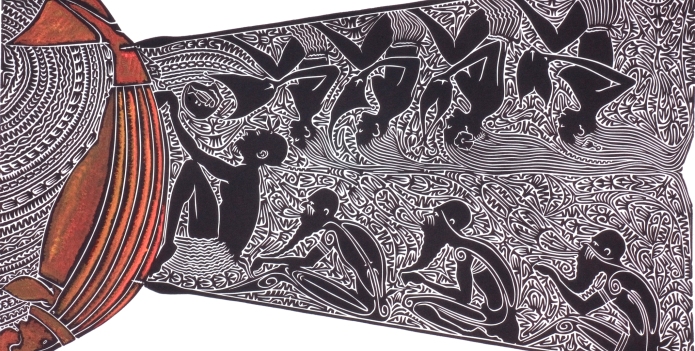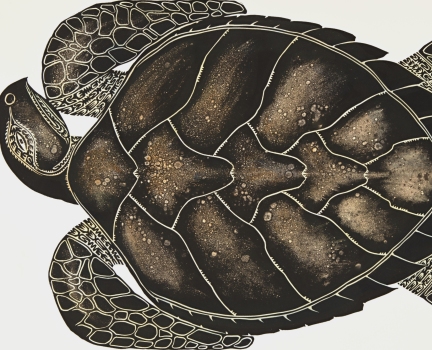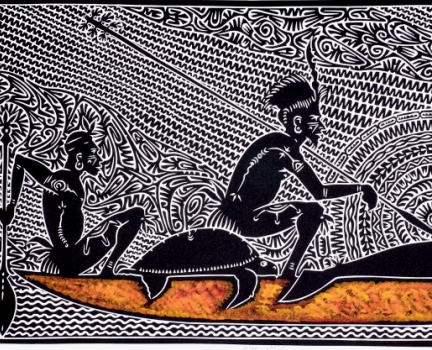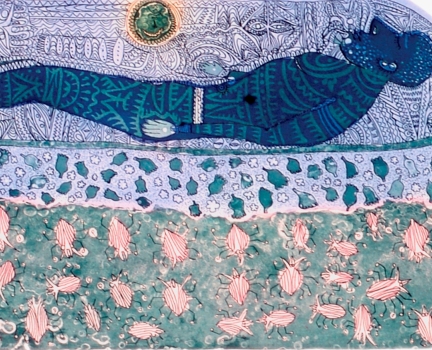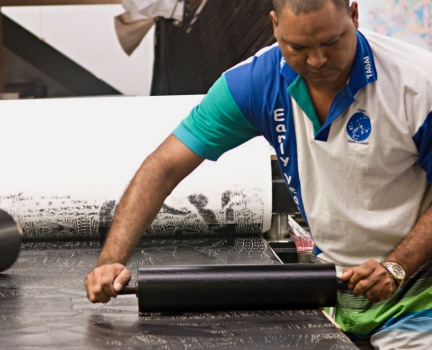Art in the Torres Strait Islands
The Torres Strait Islands, located off the coast of the northernmost tip of Queensland, are 274 islands that made up a historically busy intersection of trading and exploring. Trade with visitors from Europe and Asia was a key part of island life, with Japanese, Papua New Guineans and Malaysians regularly visiting, and a major Cambridge Expedition undertaken in the region in 1898. The arrival of missionaries in 1871 was highly significant for the area, still celebrated as ‘The Coming of the Light.’
Much of Torres Strait Islander mythology and culture has deep links with the ocean. The natural environment of the island is a major inspiration for many Torres Strait Islander artists – as put by textile artist Rosie Barkus (b.1959) “When you see where I live here, well how can you not be inspired to draw.” Marine life such as turtles, fish, dugongs, sharks, seabirds and saltwater crocodiles are considered to be totemic beings, and feature significantly in the art created in the region. The marine environment is very important, both spiritually and for daily survival.
Dance is a very important form of story-telling in the Torres Strait Islands. Striking dance ornaments such as the dhari masks and headdresses were traditionally made for rituals and performances, and have now developed into highly coveted sculptural art objects. Ken Thaiday Snr (b.1950) is famous for his shark dance headdresses. Made with plywood, bamboo, plastic, feathers and string, these sculptures (also known as ‘dance machines’) illustrate stories and recent history – hammerhead sharks are combined with combat planes from WWII.
Ken Thaiday Senior’s works are unique in their dynamic incorporation of moving components – such as flapping wings or moving jaws – that can motion in time with dance choreography. The contemporary headdresses are seen to be an important mode of cultural revival, keeping the traditional Torres Strait Islander culture dynamic and alive, and educating younger generations about their heritage.
In the early 1990s a group of younger Torres Strait artists led by the award-winning Dennis Nona (b.1973) found that the traditional artistic practices of carving and tattooing translated very effectively to printmaking and linocuts. These artists became nationally acclaimed for their beautiful and incredibly detailed prints. Widely acknowledged as one of the most important, and most collectible, Torres Strait Islander artists, Dennis Nona’s range of works have included etchings, prints, large-scale bronze sculptures and skateboard carvings. The colourful tonal gradients of the inks he uses in his prints create an organic, almost tie-dye effect.
Another leading printmaker from the region, Billy Missi (1970-2012), created highly decorated black and white linocuts of the vegetation and eco-systems of the island environment. Also mainly working in black and white, Alick Tipoti (b.1975) started his artistic career as a printmaker. He is primarily famous for his enormous and impossibly-detailed linocut pieces portraying complicated legends. More recently + has also been producing modern versions of ceremonial dance masks. His masks are made of fibreglass, to emulate the traditional use of polished hawsbill turtle shells.
The Torres Strait artists have greatly extended the range of indigenous art as recognised within Australia, bringing great Melanesian carving skills and unique stories and subject matter, to create a vibrant re-creation of their island homelands.

